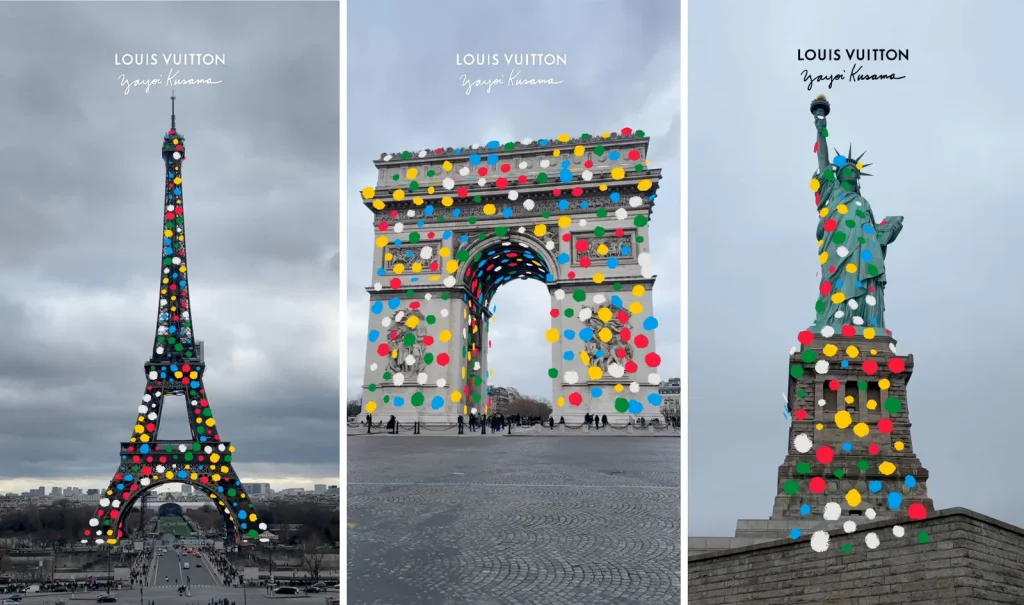Augmented Reality (AR) is changing how businesses reach out to and engage with their customers. AR is a powerful tool that can help you take your marketing campaigns to the next level by providing an immersive and interactive experience. But before that, let’s see what Augmented Reality (AR) is and how you can use the fundamentals, our insights, and tips to achieve your marketing goals.
What is Augmented Reality (AR)?
AR is a technology that expands reality by superimposing digital content on top of it. This can include anything from simple filters to complex 3D models and virtual object animation. The primary benefit of AR is that it provides a more engaging and interactive experience for the user, making it an ideal marketing tool.
But before going any further, let’s see how we can use Augmented Reality for marketing campaigns.
How can I use Augmented Reality in marketing campaigns?
That’s a typical question that everybody who doesn’t know the field of Augmented Reality doesn’t know how to use properly. For this reason, it is essential to start from the principles.
Identify your intended audience:
Understanding your target audience to make the most from AR. What are their interests and habits? This data will assist you in selecting the most effective AR experiences to reach them.
Establish your marketing objectives:
Before you begin using Augmented Reality in your marketing campaigns, it’s critical to understand your goals. Do you want to raise brand awareness, engage customers, or increase sales? Understanding your goals will assist you in determining what you want to get from the AR experiences and see if it gets the proper success.
Select the appropriate platform:
Augmented Reality can be used on different platforms like Snapchat, Facebook, and TikTok. But not only. You can show virtual objects also through Web-based Augmented Reality (WebAR) that does not require any platform if not the user browser.
Based on your target audience and marketing goals, you can choose the right platform to make the marketing campaign perform at its best.
After these three main steps, you can start to create and integrate your Augmented Reality experience into your marketing campaigns.
Create your AR experience for your marketing campaigns
There are different tools that you can use to create your AR experience. Many of these tools are offered by social platforms like (TikTok, Facebook, and Snapchat). Or, in case you want to use WebAR, many are the services that offer the possibilities to make a Web experience.
Once you have created your Augmented Reality experience, you can integrate it into your marketing campaign.
Integrate with your overall marketing strategy:
One important thing to have in your mind is that AR should not be viewed as a standalone marketing effort but as part of a larger strategy. Ensure that your AR experiences integrate with your overall marketing efforts, such as your website, email marketing, and paid advertising. Only with full integration can your campaign succeed.
Measure success:
How many people see your 3D products or AR experience through the platform or WebAR? Is it useful to implement AR? Using and understanding the analytics to measure the success of your AR marketing campaigns will help you refine your efforts and ensure you achieve your goals.
Where can you use AR to promote your product or your brand?
As we said before, AR is a powerful tool you can use wherever you want. On social media, TV, offline banners, or simply on the web. Let’s take some examples to understand better how you can use Augmented Reality on different occasions.
Augmented Reality on Social Media for your marketing campaigns
- Use AR filters: AR filters are a popular and effective social media marketing tool. They give users a fun and interactive experience while increasing brand awareness and engagement. An example could be the AR filter that helps your brand awareness grow like Louis Vuitton did, thanks to Snapchat.
- Collaborate with influencers: Influencer marketing can effectively reach a wider audience and promote your AR filters. Think about collaborating with influencers who have a large following in your target market. A fashion brand, for example, could collaborate with a famous fashion influencer to showcase its AR filter on its social media channels. This will bring to your brand a great return of image.

Using AR offline (billboard and TV):
To integrate your Augmented Reality experience offline, you can use WebAR. How? Use QR codes in your marketing campaigns.
QR codes can be a great way to connect physical advertisements to AR experiences. Customers can now access an AR experience directly from a physical advertisement. A car manufacturer, for example, could place a QR code on a billboard that leads to an AR experience where customers can explore the interior and exterior of a new car model.
Including AR-enabled billboards in your advertising mix can give customers a unique and interactive experience.
You can also integrate AR with TV commercials. For example, a toy company could air a TV commercial with an Augmented Reality experience in which viewers can interact with the toy in their environment.
Conclusion
Augmented Reality is a powerful marketing tool that can assist businesses in reaching and engaging customers uniquely and interactively. Incorporating AR into your social media, offline, and TV advertising efforts can help drive brand awareness and engagement, leading to business growth.
Don’t be afraid to experiment with Augmented Reality to see what works best for your company. Keep in mind that AR technology is constantly evolving, so staying current on new developments and trends is essential for maximizing its potential by downloading our free paper with more insights.

